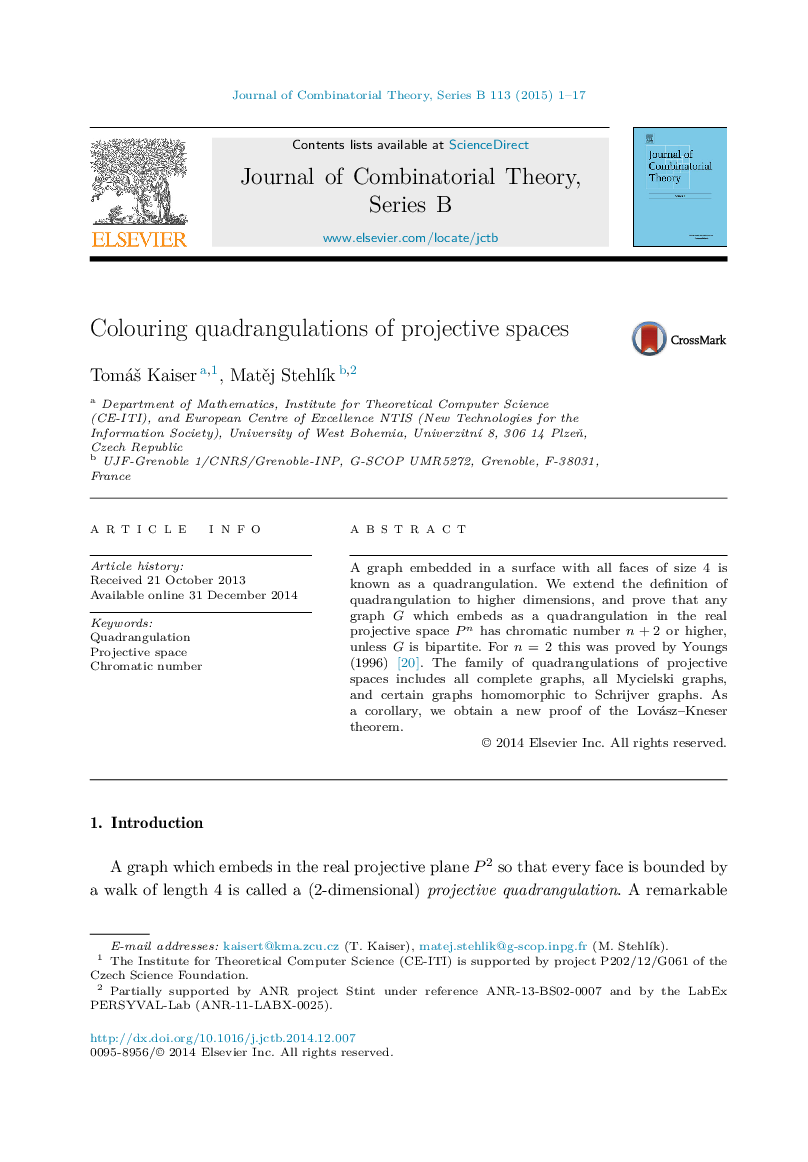| Article ID | Journal | Published Year | Pages | File Type |
|---|---|---|---|---|
| 4656777 | Journal of Combinatorial Theory, Series B | 2015 | 17 Pages |
Abstract
A graph embedded in a surface with all faces of size 4 is known as a quadrangulation. We extend the definition of quadrangulation to higher dimensions, and prove that any graph G which embeds as a quadrangulation in the real projective space PnPn has chromatic number n+2n+2 or higher, unless G is bipartite. For n=2n=2 this was proved by Youngs (1996) [20]. The family of quadrangulations of projective spaces includes all complete graphs, all Mycielski graphs, and certain graphs homomorphic to Schrijver graphs. As a corollary, we obtain a new proof of the Lovász–Kneser theorem.
Related Topics
Physical Sciences and Engineering
Mathematics
Discrete Mathematics and Combinatorics
Authors
Tomáš Kaiser, Matěj Stehlík,
